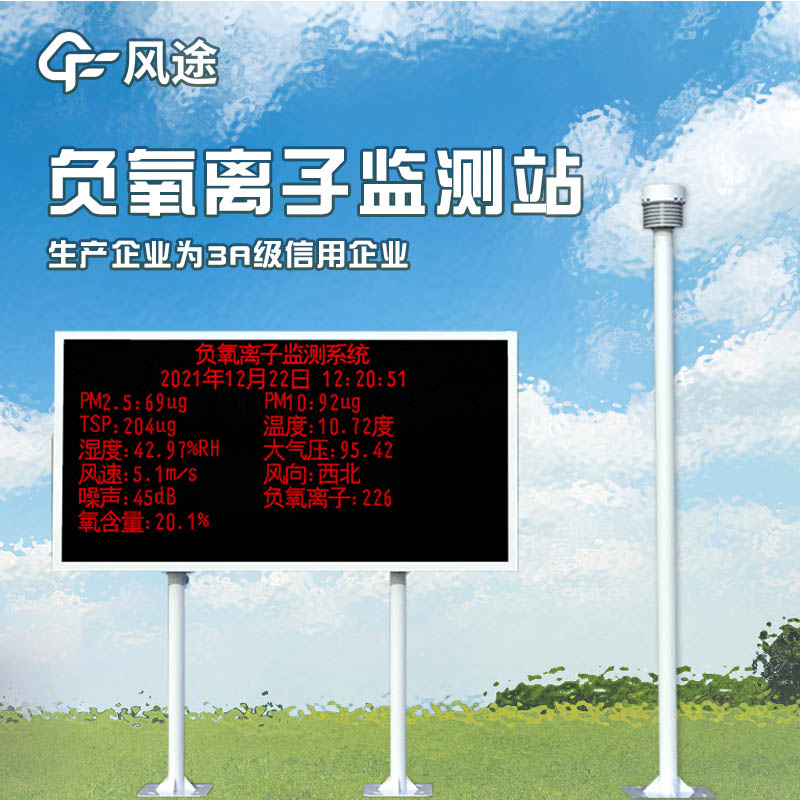Tianyi Sensor IOT Technology Co., Ltd
Sales Manager:Ms. Emily Wang
Cel,Whatsapp,Wechat:+86 15898932201
Email:info@fengtutec.com
Add:No. 155 Optoelectronic Industry Accelerator, Gaoxin District, Weifang, Shandong, China

Sales Manager:Ms. Emily Wang
Cel,Whatsapp,Wechat:+86 15898932201
Email:info@fengtutec.com
Add:No. 155 Optoelectronic Industry Accelerator, Gaoxin District, Weifang, Shandong, China
time:2025-08-29 08:57:33 source:Weather Station viewed:138 time
In outdoor natural settings such as dense forests, mountain streams, vast rivers, lakes and seas, and around rushing waterfalls, people often feel the air is exceptionally fresh. The key reason behind this is that the air in these places contains a sufficient amount of negative oxygen ions. Essentially, negative oxygen ions are oxygen atoms carrying negative charges. They can interact with suspended dust, harmful bacteria, smoke particles and other substances in the air, causing these harmful substances to either settle on the ground or be neutralized. Ultimately, this achieves the effect of purifying the air and increasing the proportion of oxygen in the environment. Notably, negative oxygen ions are also one of the key indicators for evaluating air quality, and the World Health Organization (WHO) has defined specific standards for the concentration of negative ions required for fresh air.
With the rapid development of the industrial sector, the problem of air pollution in many regions has not yet been fundamentally resolved. According to calculations by environmental authorities, in large cities, especially those with heavy industry as the main industry, the number of negative oxygen ions per cubic centimeter in the air is only about 200.
To further improve the effectiveness of negative oxygen ion concentration monitoring, timely assess air quality conditions, and provide accurate data support for related work such as ecological environmental protection and tourism resource development, specialized negative oxygen ion monitoring stations have been launched on the market. As the core component of such monitoring stations, the negative oxygen ion detector adopts a design that combines a cylindrical ion collection unit with an ultra-micro current signal processing unit. This design not only ensures high ion charge conversion efficiency but also maintains stability during data collection.
In addition to negative oxygen ion detectors used in outdoor environments, there are also types of equipment suitable for indoor scenarios available on the market, such as full-color screen negative oxygen ion detectors. These indoor devices can display various element data in a full-color format, have data storage capabilities, and can export the stored data via a USB flash drive.

Meteorological monitoring system is a high-precision automatic meteorological observation device integrating temperature, humidity, wind speed, wind direction, and atmospheric pressure sensors. This device combines ultrasonic detection technology to achieve accurate all-weather monitoring of meteorological elements....
Underwater sonar imaging sounder is a portable underwater detection device integrating sonar technology and video recording. It generates high-resolution underwater topographic images, 3D models, and target location information by emitting sound waves into the water and receiving the echoes. It is suitable for single-person outdoor operations such as underwater search and rescue, topographic mapping, and engineering surveys....
As a crucial component of the power system, transmission lines undertake the important task of efficiently transmitting the electrical energy generated by power plants to various regions. By constructing a vast transmission network, electrical energy can travel over long distances to meet the electr...
Methane, as the main component of natural gas, is widely used in industrial production and urban gas supply. However, its colorless, odorless, flammable and explosive properties make methane leakage a major safety hazard. The handheld Laser methane telemeteris mainly used for long-distance mea...